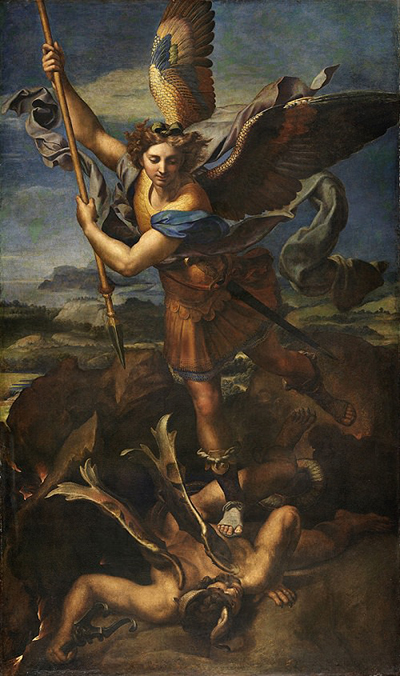This painting is one of the biggest achievements of Raphael while in Florence. It received massive recognition and great acknowledgements throughout the years. This marked a great transition of his painting skills to a more prolific level with a sense of style and human touch in it.
The realism is broad in most aspects of the painting and the entire scene is biblically amazing. What made Raphael a great painter was not the paintings that he began with but rather the third phase of his painting that was more realistic, great and pleasing to look at. He had the ability to conceptualize his ideas clearly on a canvas making him a distinguished painter. This is not just any other of his paintings. This is one of a kind with all kinds of hidden meanings and ideologies depending on which angle you analyze it from.
There were two of these paintings, the first one was the painting of St. Michael which was commissioned by Guidobaldo da Montefeltro who was the then Duke of Urbino. After a decade, Raphael was again commissioned by Pope Leo X to produce the portrait of St. Michael Vanquishing Satan. The artwork was developed during the period of high renaissance where the use of oil on panel was the most common technique. A similar technique is the one seen to produce this great piece. The 160cm by 26.8cm was regarded as Raphael’s first distinct artwork which seems to have improved a great deal throughout the years. This painting is among the most amazing pieces he produced during the high renaissance.
Despite being one of the best artworks Raphael produced, there are disparities that cannot be ignored. Throughout Raphael’s painting career, he has the know how to come with crispy clear paintings with human character and realism embedded in them. But this one veers from this amazing style and suddenly sets a tone of its own. In the painting, the use of colour combination skills is no minimal. There is an overuse of certain colours to come up with a less clear view. This has been achieved by the intense use of black to create a smoky effect. There is more gold paint being used on the characters making them less human-like.
As much as there is a good amount of detail, Raphael seems to have taken a very different route from his usual. This only means that someone else did a bigger part of the painting than the master. Most people suspect that it was his favourite student Giulio Romano. He is the only painter close to Raphael who liked painting with the black colour to create a darker effect as seen in most part of this painting. Raphael’s footprint on the canvas seems minimal and most of it is thought to have been done by Giulio Romano. There was even a complaint made to Michelangelo about the painting. They stated that the characters looked more metallic in nature instead of being human-like. The current location of the painting is in the department of paintings of louvre in room 712. Its original location is dated back in Urbino the birthplace of Raphael.




